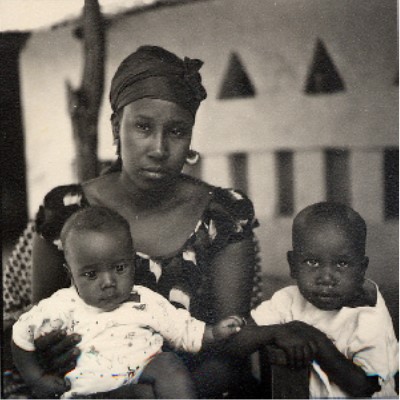Africa Online Digital Library
This site offers a wealth of material on a variety of topics in African history and digital library standards and practices. The project began a redesign with an updated version for the project's 20th anniversary in 2020. The site’s stated goal is the implementation of emerging best practices in the “American digital library community” in an African context, and it does not disappoint. Indeed, the site demonstrates a rare combination of scholarly sophistication, ease of use, and broad appeal. The area of interest for most users will likely be the “Galleries,” a set of seven primary-source collections that include more than 500 image, text, and sound files. Much of the material comes from West Africa, which is not surprising given the site’s two African partners: L’Institut Fondemental d’Afrique Noire (IFAN) and the West African Research Center, both based in Dakar, Senegal. The “best practices” endeavor seeks to answer questions about digital resources, such as what types of resources ought to be digitized; how they ought to be cataloged, organized, stored, and preserved; and what kind of technical specifications should be used for digitizing different kinds of objects, e.g., texts, images, sounds, etc. For those especially interested in these questions, the site contains 12 working papers and research essays (under the “Research” and “Best Practices” buttons) that explore these issues.
Four “Galleries” contain high-quality downloadable photographs. The IFAN Gallery (30 images) and the Philip Curtin Gallery (350 images) represent a wide range of West African social, economic, and artistic life. The more thematically-driven “Passport to Paradise” Gallery holds about 50 photographs that represent the urban visual culture of the Mourides, a Senegalese Sufi movement. These images are also downloadable and accompanied by brief descriptions that provide useful context. Many represent Sheikh Amadou Bamba, a local Sufi saint, but there is also a virtual pantheon of pan-African figures including Leopold Senghor (the Senegalese poet and politician), Kwame Nkrumah (Ghana’s first president), and Malcolm X. Visual references also include Nelson Mandela, Black Power, Che Guevara, George H. W. Bush, Bill Clinton, and Osama bin Laden. The descriptions of the images offer a Senegalese—and, at times, West African Islamic interpretation of world events, making the images useful for teaching contemporary African history in global perspective.
The “Mosques of Bondoukou” Gallery contains 18 photographs of mosques in Bondoukou, located in northern Cote d’Ivoire. The images represent the variety of architectural styles and building materials used in Bondoukou mosques. The photographs would be a wonderful complement to any number of themes in the study of Africa. Bondoukou was, from the early 18th century, an important trading center that linked the forest region of West Africa with the great trans-Saharan trade. As with other centers, such as the better-known Timbuktu, Bondoukou was a crossroads for the exchange of material, political, and intellectual goods, and that tradition is evident in the diversity of the city’s mosques.
The text collection is no less well-developed. West African researcher Charles Becker’s collection of documents from HIV/AIDS conferences, dating from the early 1980s, offers impressive depth, with documents charting the evolution of the study of the pandemic in Africa. This topic attracts a high degree of student interest in the United States, and while there is an impressive amount of information already online, this site offers something new—in effect, a genealogy of the HIV/AIDS research agenda. Anyone teaching the history of disease or medicine in global perspective could use these documents and other sources to develop a strong component on HIV/AIDS in Africa. The collection would be useful for someone conducting research on how knowledge about it developed. Users can examine nearly two decades of conference programs, following research trends as they emerged within the scientific and public health communities.
The Fuuta Tooro Oral History Project is especially impressive. This Gallery contains sound files of three interviews conducted by noted historian David Robinson. The three interviews are part of a larger body of material Robinson collected in 1968-69 among the Fulbe people of West Africa. QuickTime audio clips in the original Pulaar are accompanied by English and French transcriptions. There is a substantial (4,200-word) background essay to this Gallery and an introduction provides context for each interview. The interviews themselves focus on the Islamic regime of Fuuta Tooro from the late 18th to the end of the 19th century, but taken as a whole, the material opens a window onto Fulbe pastoralist livelihood, the regional history of Islam, and West Africans’ collision with French colonial rule through the 20th century. The sound files offer a rare opportunity to listen to oral testimony. The scarcity of such sources aside, the ability to listen to the original recordings allows listeners to pick up on key extra-lexical meanings—pauses and repetition, as well as changes in pitch, volume, cadence, and speed—that inform scholarly research with oral sources. This part of the site represents the idea of “best practices” indeed, putting sources that are necessarily unique in nature at the disposal of a growing global educational community.
